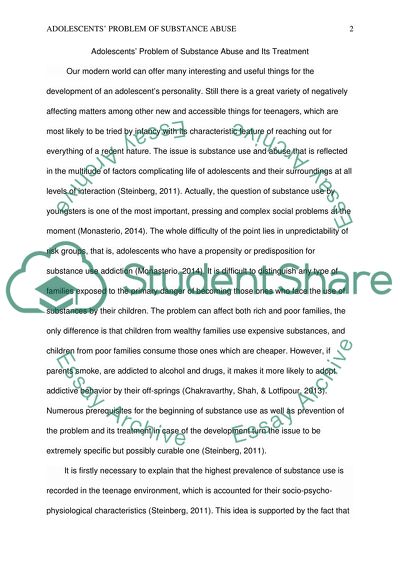Cite this document
(Adolescents Problem of Substance Abuse and Its Treatment Coursework Example | Topics and Well Written Essays - 2000 words, n.d.)
Adolescents Problem of Substance Abuse and Its Treatment Coursework Example | Topics and Well Written Essays - 2000 words. https://studentshare.org/health-sciences-medicine/1874012-substance-use
Adolescents Problem of Substance Abuse and Its Treatment Coursework Example | Topics and Well Written Essays - 2000 words. https://studentshare.org/health-sciences-medicine/1874012-substance-use
(Adolescents Problem of Substance Abuse and Its Treatment Coursework Example | Topics and Well Written Essays - 2000 Words)
Adolescents Problem of Substance Abuse and Its Treatment Coursework Example | Topics and Well Written Essays - 2000 Words. https://studentshare.org/health-sciences-medicine/1874012-substance-use.
Adolescents Problem of Substance Abuse and Its Treatment Coursework Example | Topics and Well Written Essays - 2000 Words. https://studentshare.org/health-sciences-medicine/1874012-substance-use.
“Adolescents Problem of Substance Abuse and Its Treatment Coursework Example | Topics and Well Written Essays - 2000 Words”. https://studentshare.org/health-sciences-medicine/1874012-substance-use.


